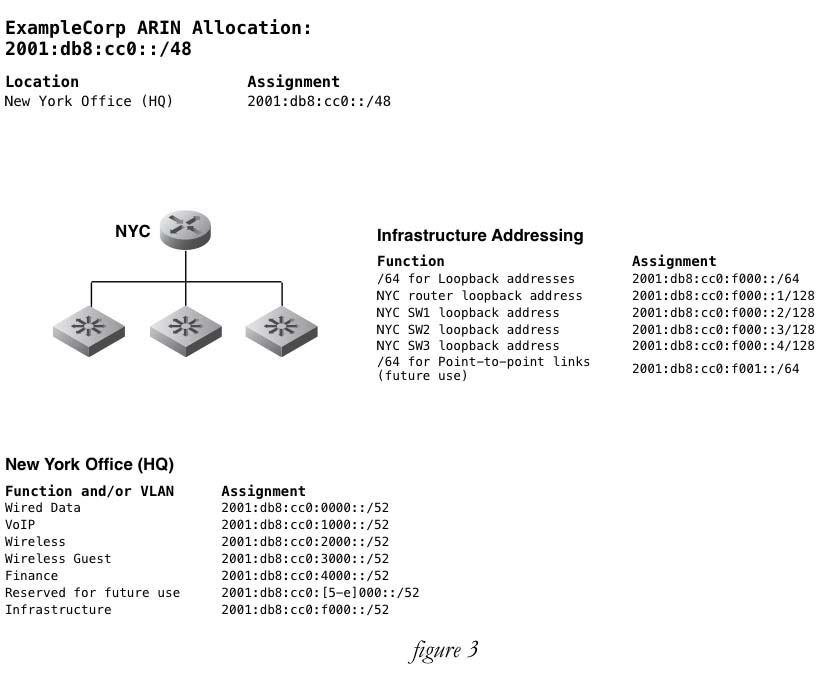And now, part three of a four-part blog on creating an IPv6 addressing plan.
A Sample Plan
Let’s say you’re creating an address plan for a campus LAN that has groups of network segments supporting particular functions (i.e., voice, wired and wireless data, etc.). In addition to the addressing required for these functions, you’ll also need addresses for infrastructure. Finally, additional subnets for future use should also be included:

A total of six subnets would be required to support the above functions (along with two set aside for future use). This would require the reservation of three bits in the prefix to provide the necessary subnets (shown below by ‘N’, while ‘X’ are unspecified):

Note that while this provides sufficient subnets, the resulting prefix isn’t as legible because the bit boundary doesn’t align with the 4 bits used to define the hexadecimal character in the address:

Continuing with our example, the abundance of addresses available in IPv6 allows us to use 4 bits (instead of only 3), which makes the hexadecimal representation of the resulting subnets less ambiguous:

For each subnet group, only one value is possible for the hexadecimal character that corresponds to the 4-bit boundary in the IPv6 prefix (in this case, a /52). This makes the resulting prefix more immediately legible.
Obviously, the use of the more bits gives us more groups of subnets—16 in this case, 6 of which we’ll use immediately and 10 for future. But fewer host ID bits also reduces the number of available /64 subnets in each group. In our above example, we went from 8,192 /64s available per /51 to only 4,096 /64s available with a /52.
As mentioned previously, we’ll want to reserve a /64 each for both /127 point-to-point subnets as well as any /128 loopback addresses we may need.
Figure 3 below demonstrates the application of these principles depicting part of an IPv6 addressing plan for a ExampleCorp, a fictional enterprise.

But what if your organization has more than one site? Since the standard site allocation is a /48 any organizations that have more than one site will receive a larger allocation from the RIR or ISP. The graphic below (figure 4) shows our fictional corporation expanding to three sites. Note that though a /46 would be sufficient to provide three /48s with one left over for future expansion, the RIRs, for now, typically adhere to the 4 bit boundary to obtain the benefits of legibility and efficiency already discussed. Thus, the /44 used for our example below.

Notice that in both examples the function/VLAN subnet assignments are easily identifiable by the prefix given that the assignments conform to a 4-bit boundary. Also, note the assignment of function or location significance to an IPv6 subnet, which is the topic of the next section.
Next time, assigning function and location significance to IPv6 subnets and host address assignments.





